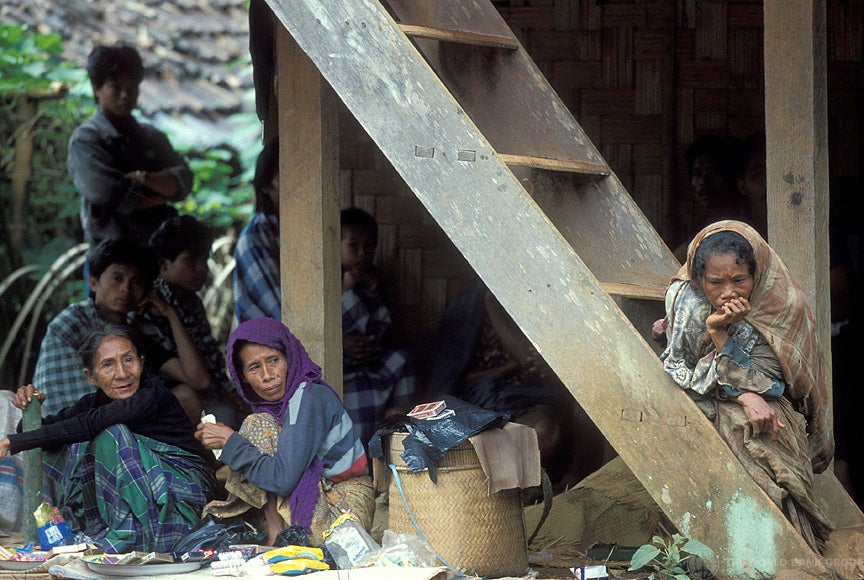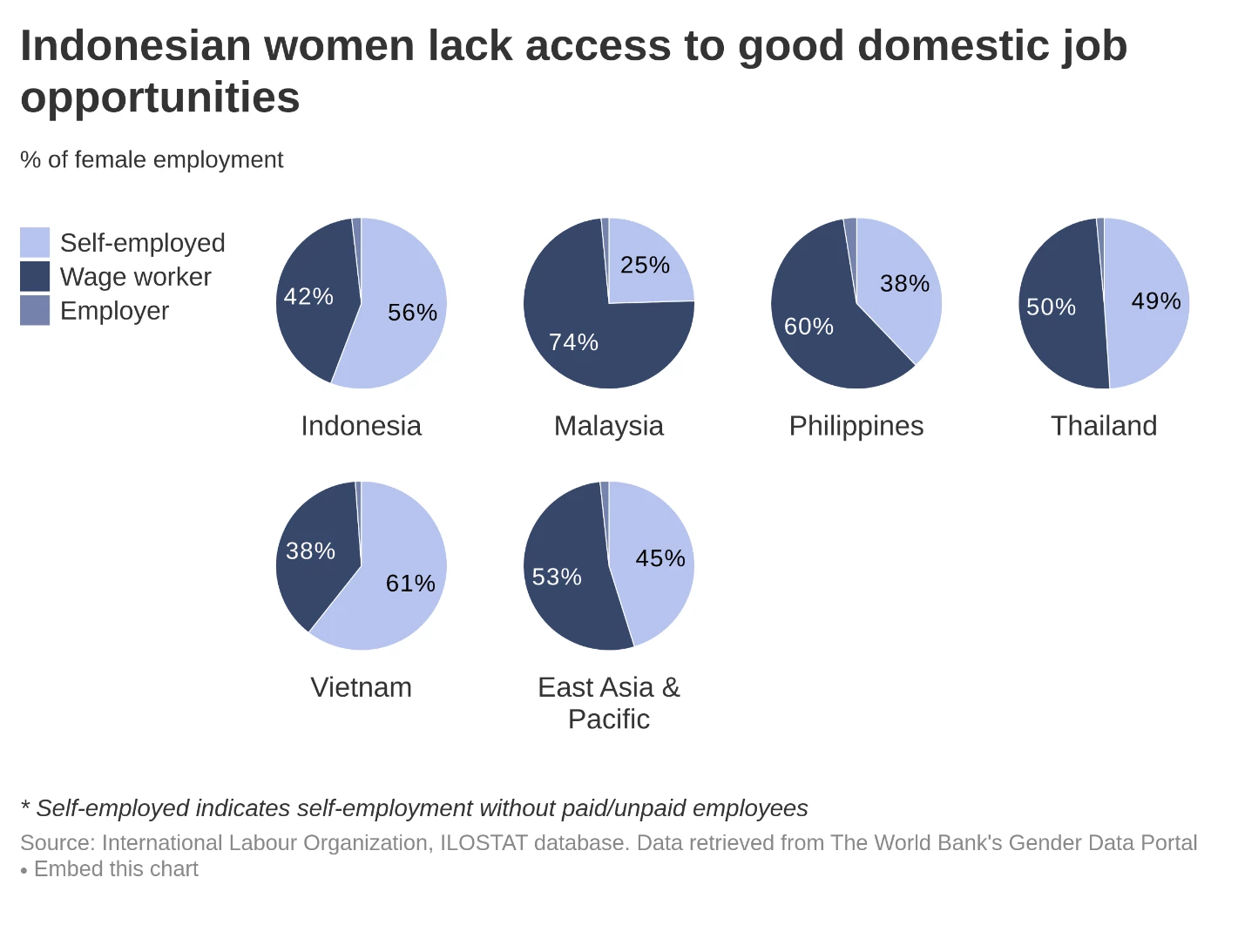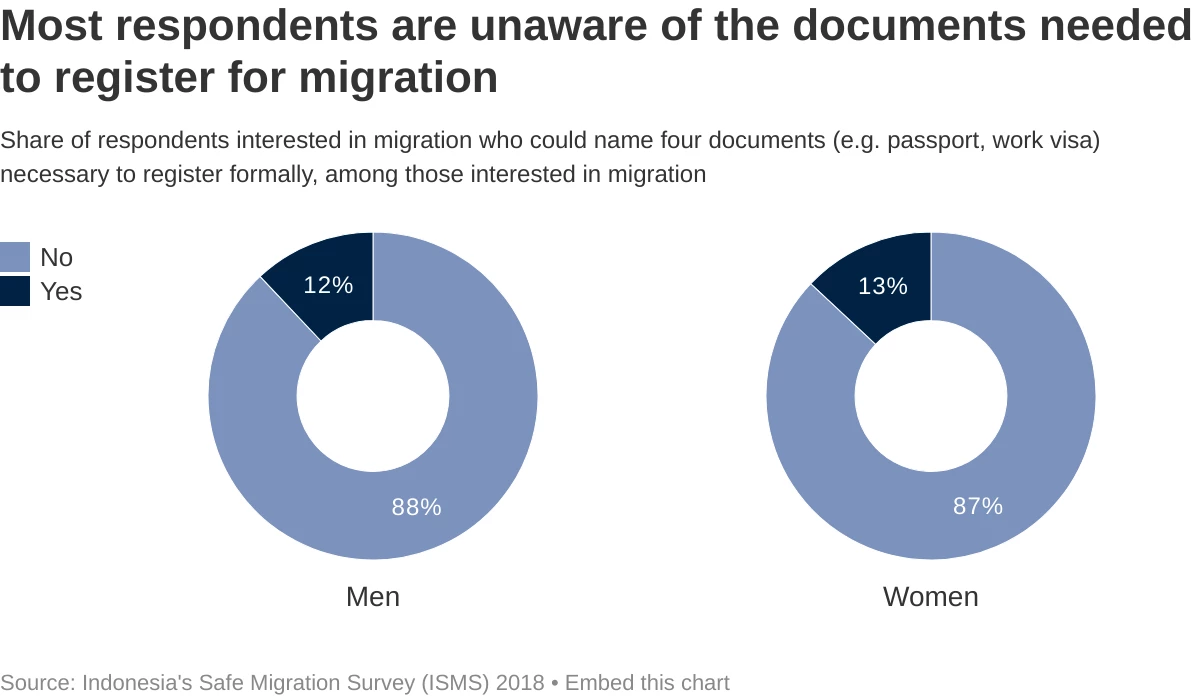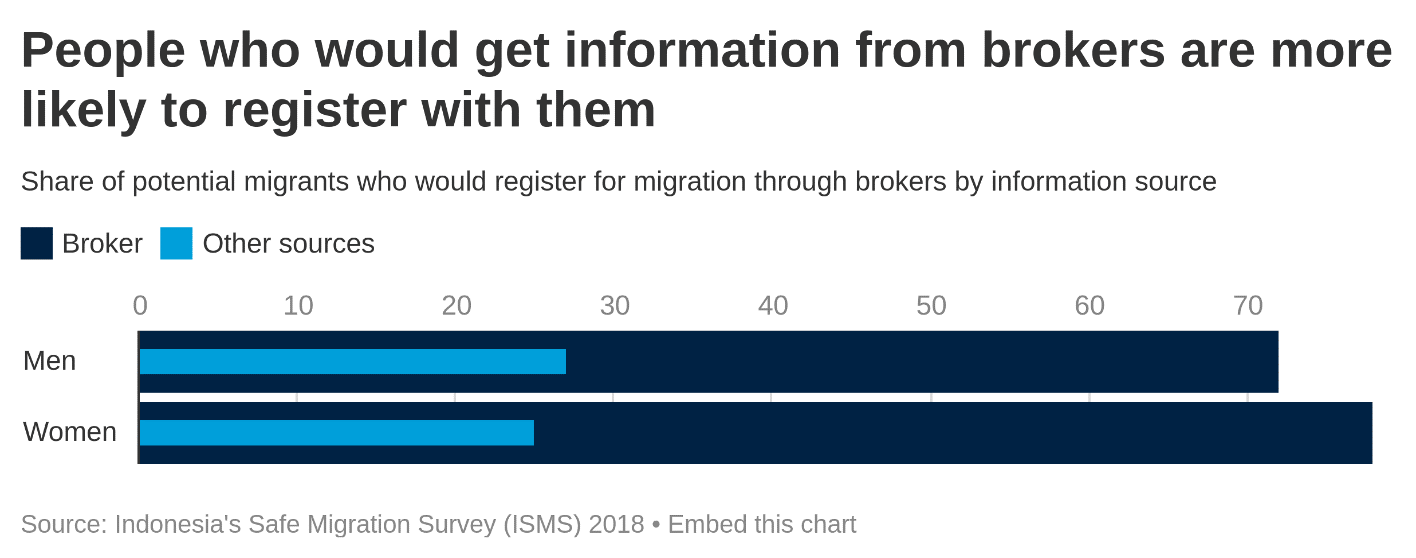 © Curt Carnemark / World Bank
© Curt Carnemark / World Bank
An estimated 266 million people worldwide are international migrants (see KNOMAD brief) and 47% of them are women (World Bank Gender Data Portal). On this International Migrants Day, December 18, we take an example from Indonesia to illustrate why a gender lens is useful for studying migration.
Indonesia is among the world’s largest source countries for migrant workers, with an estimated 9 million Indonesians living and working overseas. A recent World Bank report notes that Indonesia’s migrant workers are driven abroad by the lack of good job opportunities in the local labor market and relatively higher wages overseas. The latter is especially true for women. Female migrant workers make 5.3 times more than their previous domestic job compared to 3.6 times for male.
Dipping into harmonized cross-country sex-disaggregated data curated on the World Bank Gender Data Portal, we learn that only 1 in 2 Indonesian women are employed. Working women are predominantly self-employed. Only 42% have access to wage work in Indonesia, compared to 74% in Malaysia and 53% in the East Asia and Pacific region.
Male and female migrants face different opportunities and risks. An ongoing study by the World Bank evaluates the effectiveness of different ways of promoting safe migration practices. The baseline data collected from more than 13,000 Indonesians aged 18-40 suggests three key findings.
1. Few people know the procedures for documented migration, even when they are interested in migrating.
Only 12% of respondents who claim to be interested in migrating can name all the documents required to migrate (compared to 10% among those who are uninterested in migrating). There is no gender gap in information: men and women are equally poorly informed.
https://www.datawrapper.de/_/a1xti/
2. Where people get their information is correlated with how much they know and how they would migrate.
Women are much more likely to say they would get information from informal brokers or formal private labor placement offices, while men are more likely to get information from government offices, the internet, or friends. This difference in information channels is statistically significant.
Respondents who get information from formal sources are more knowledgeable—nearly twice as likely to know the required documents—than those who rely on informal sources. Information sources are also linked to where people plan to register or apply to migrate: people who get information from (informal) brokers are much more likely to apply through them as well.
3. Time constraints may play a role in making women more vulnerable to undocumented migration
Women are more likely to register with informal migration brokers while men are more likely to rely on government agencies such as labor offices for their job search. What explains this difference? A clue may lie in the figure below. Women without young children behave almost the same as their male counterparts. In contrast, women with young children are much more likely to register with a broker than men with children. Overall, women are 25% more likely than men to say they would register through a broker and 38% less likely to say they would register with a government labor office, a difference that is almost entirely driven by women with children under the age of 15.
Household roles and duties are not distributed evenly between men and women in many parts of the world, including Indonesia. Women are usually disproportionately responsible for unpaid household labor, including childcare, which limits their mobility. Seeking out formal sources of information about migration thus impose higher opportunity costs for women, who face greater time constraints. Labor offices and other government agencies are generally located far from the rural villages that are the source of many migrant workers. Documented migration in Indonesia is a lengthy and difficult process, imposing further time costs on female migrants. Informal brokers are a more convenient option as they are more likely to be located within villages, and are willing to visit prospective migrants at their homes and assist them with paperwork.
Why is this important?
We know that childcare plays an important role in mediating women’s economic decisions, including participating in the labor market. A working paper by the World Bank East Asia & Pacific Gender Innovation Lab shows that improved access to childcare increases female labor force participation in Indonesia by 13%. This data further suggests that childcare may also affect how women access information and opportunities.
This matters for workers, as the likelihood of undocumented migration is higher for those who use informal channels to learn about migration opportunities. The risks of undocumented migration are higher than those of formal migration and relatively higher for women. Women are more likely than men to experience emotional and physical abuse from undocumented migration, and like men, they also risk becoming victims of financial exploitation.
This data is a reminder that migration is not gender neutral. Women migrate for different reasons, to different places, in different ways, and face different risks and outcomes from migration than men. Policies that seek to improve migration outcomes must be based on an understanding of these differences, such as simplifying migration procedures and making migration information more easily accessible and targeted.










Join the Conversation